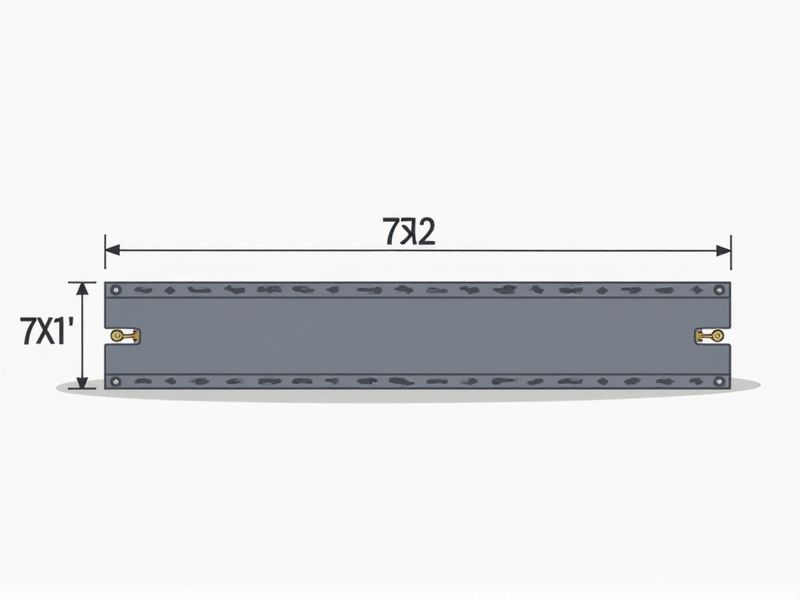
When selecting a power strip, it's important to consider the typical dimensions to ensure it fits your intended space. Most standard power strips measure approximately 10 to 12 inches in length, 2 to 3 inches in width, and about 1 to 1.5 inches in height. However, variations exist depending on the number of outlets and added features like USB ports or surge protection. Always check the product specifications before purchase to make sure the power strip meets both your space and power needs.
Electrical Voltage Rating
The electrical voltage rating of a power strip commonly ranges from 125 volts in North America to 230 volts in Europe and other regions. It's essential to choose a power strip that can handle the intended load, typically measured in amps, where most household strips are rated for 15 amps. Overloading a power strip can lead to overheating and potential fire hazards, so be mindful of the total wattage your devices consume. Understanding these voltage specifications ensures safe and efficient usage, tailored to your specific electrical environment.
Number Of Outlets
The standard power strip typically features anywhere from 3 to 12 outlets, allowing multiple devices to be plugged in simultaneously. A model with 6 outlets can accommodate everyday electronics, while a 12-outlet design is ideal for office or entertainment setups. Consideration of the amperage rating, commonly 15A, is crucial for safety and efficiency, as exceeding this limit could pose a fire risk. For optimal organization, some power strips also come with integrated surge protection to safeguard your devices from voltage spikes.
Spacing Between Outlets
The spacing between outlets on a power strip is crucial for accommodating large plugs and ensuring safety. Many power strips feature socket designs that provide at least 1.5 inches of space between outlets, allowing two bulky adapters to be used simultaneously without blocking adjacent sockets. When choosing a power strip, consider models that offer adjustable or widely spaced outlets, which can enhance usability and reduce the risk of overheating. For optimal performance, ensure your power strip is rated for the necessary wattage, typically around 1,500 watts for standard home use.
Plug Type Compatibility
Power strips typically support multiple plug types, ensuring compatibility with various devices and appliances. Standard configurations include 6 to 12 outlets, accommodating standard flat and round plugs, as well as specific types like polarized and non-polarized connectors. Many power strips feature USB ports, facilitating the direct charging of smartphones, tablets, and other electronics without needing an adapter. When selecting a power strip, consider the maximum load capacity, often rated between 1,500 to 2,500 watts, to ensure it meets your power requirements safely.
Surge Protection Capability
Surge protection capability is a critical standard for evaluating power strips, especially in environments with sensitive electronics. A reliable power strip should ideally have a surge rating of at least 1,000 joules, providing adequate protection against voltage spikes, which can be caused by lightning strikes or power surges from appliances. Look for power strips that feature built-in indicator lights to show when surge protection is active, ensuring your devices are safeguarded at all times. Checking for certifications, such as UL 1449, ensures that the power strip meets industry standards for surge protection efficacy.
Cord Length
The standard cord length for power strips typically ranges from 6 to 10 feet, ensuring flexibility and reach for connecting multiple devices. A longer cord provides convenience for placement in various locations, while shorter cords can minimize clutter. Choosing the right cord length depends on your specific needs and the layout of your workspace. For optimal safety, ensure the power strip is placed within reach of an electrical outlet to avoid any strain on the cord.
Mounting Options
Power strips typically offer versatile mounting options to suit various settings, accommodating preferences for installation. Certain models include built-in keyhole slots or adhesive strips, allowing you to securely attach them to walls or desks. You may find power strips designed for under-desk or wall-mounted setups, optimizing space utilization and reducing clutter. Look for units rated for at least 15 amps, ensuring safe and efficient operation in environments with high electrical demands.
Material And Durability
When selecting a power strip, prioritize materials such as fire-resistant thermoplastic to enhance safety and durability. Look for power strips that feature over-current protection ratings, often marked in amps; these typically range from 10 to 15 amps, ensuring your devices remain safe from electrical surges. High-quality power strips may also come with surge protection capacities measured in Joules, with at least 1,000 Joules being a reliable benchmark for safeguarding electronics. Always consider the cord length, with options from 3 to 12 feet, allowing flexibility in placement while maintaining effective functionality.
Safety Certifications
When selecting a power strip, prioritize safety certifications such as UL, CSA, or ETL, which ensure rigorous testing for electrical hazards. You should look for features like surge protection, which can absorb spikes over 1,000 joules, safeguarding your devices. Many quality power strips come with built-in circuit breakers that cut off power at currents exceeding 15 amps to prevent overheating. Choosing a power strip that complies with safety standards can significantly reduce the risk of electrical fires and equipment damage in your home or office.
Power Rating Or Wattage
The power rating of a power strip, typically measured in watts, directly determines its maximum load capacity, ensuring safe operation without overheating. Most standard power strips in the market are rated to handle up to 1875 watts or 15 amps, which accommodates common household appliances and electronics effectively. When choosing a power strip, consider the total wattage of devices you plan to connect, as exceeding this limit can pose fire hazards. Your awareness of power strip ratings can help protect your devices and enhance safety in your electrical setup.
